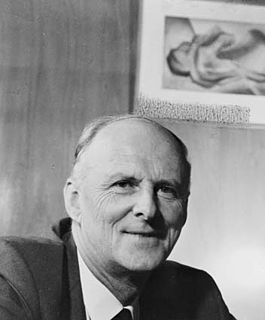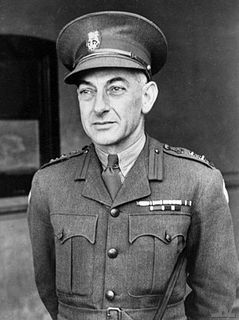Related Research Articles
The Royal Radar Establishment was a research centre in Malvern, Worcestershire in the United Kingdom. It was formed in 1953 as the Radar Research Establishment by the merger of the Air Ministry's Telecommunications Research Establishment (TRE) and the British Army's Radar Research and Development Establishment (RRDE). It was given its new name after a visit by Queen Elizabeth II in 1957. Both names were abbreviated to RRE. In 1976 the Signals Research and Development Establishment (SRDE), involved in communications research, joined the RRE to form the Royal Signals and Radar Establishment (RSRE).

The Commonwealth Scientific and Industrial Research Organisation (CSIRO) is an Australian Government agency responsible for scientific research.
Ronald Newbold Bracewell AO was the Lewis M. Terman Professor of Electrical Engineering of the Space, Telecommunications, and Radioscience Laboratory at Stanford University.

The Australian Atomic Energy Commission (AAEC) was a statutory body of the Australian government.
John Robert Philip AO FAA FRS was an Australian soil physicist and hydrologist, internationally recognised for his contributions to the understanding of movement of water, energy and gases. While he never performed his own experimental work, he was recognised for his skills in mathematics that could be used to explain physical processes and solve real world problems.
Harold James Frith AO was an Australian administrator and ornithologist. He was born at Kyogle, New South Wales and studied Agricultural Science at Sydney University. Harry Frith first joined the CSIRO Division of Plant Industry but later transferred to the Division of Wildlife and carried out extensive research on malleefowl, waterfowl, especially magpie geese, and pigeons. He eventually became Chief of the Division and was instrumental in proposals that led to the establishment of Kakadu National Park.
John Stuart Anderson FRS, FAA, was a British and Australian scientist who was Professor of Chemistry at the University of Melbourne and Professor of Inorganic Chemistry at the University of Oxford.

Sir John Philip Baxter, better known as Philip Baxter, was a British chemical engineer. He was the second director of the University of New South Wales from 1953, continuing as vice-chancellor when the position's title was changed in 1955. Under his administration, the university grew from its technical college roots into the "fastest growing and most rapidly diversifying tertiary institution in Australia". Philip Baxter College is named in his honour.

Sir Alan Walsh FAA FRS was a British-Australian physicist, originator and developer of a method of chemical analysis called atomic absorption spectroscopy.

Sir Leslie Harold Martin, was an Australian physicist. He was one of the 24 Founding Fellows of the Australian Academy of Science and had a significant influence on the structure of higher education in Australia as chairman of the Australian Universities Commission from 1959 until 1966. He was Professor of Physics at the University of Melbourne from 1945 to 1959, and Dean of the Faculty of Military Studies and Professor of Physics at the University of New South Wales at the Royal Military College, Duntroon, in Canberra from 1967 to 1970. He was the Defence Scientific Adviser and chairman of the Defence Research and Development Policy Committee from 1948 to 1968, and a member of the Australian Atomic Energy Commission from 1958 to 1968. In this role he was an official observer at several British nuclear weapons tests in Australia.

Major General Sir Jack Edwin Stawell Stevens, was a senior officer in the Australian Army during the Second World War. He was best known as the commanding officer of the 6th Division from 1943 to 1945.
Bruce Edward Hobbs AO FAA FGSAust FTSE is an Australian structural geologist and science administrator. He is a research fellow of the Commonwealth Scientific and Industrial Research Organisation and adjunct professor, University of Western Australia. He was elected a Fellow of the Australian Academy of Science in 1991. He was appointed the first Chief Scientist of Western Australia in 2003 but resigned over fundamental differences with the Carpenter Government in 2006.
Pierre Aigrain was a French physicist and Secretary of Research in the French Academy of Sciences.

Kenneth Adie Ferguson was an Australian veterinary scientist.
Kenneth G. McCracken, AO is an Australian physicist and leading space scientist, foundation Director of the CSIRO Office of Space Science and Applications and Foundation Chief of the CSIRO Division of Mineral Physics. He had earlier worked in the United States of America for several years where he occasionally worked as a consultant for NASA.
Geoffrey Gunther Eichholz, an educational leader in health physics at the Georgia Institute of Technology. Eichholz played a key role in the successful establishment of the Department of Nuclear Engineering and Health Physics. The Department has been a constant source of well-educated and well trained graduates in the field of nuclear engineering, health physics and medical physics. Professor Eichholz was involved at all levels of the educational ladder including leadership roles and participation in doctoral and masters committees.
Catherine Patricia Foley is an Australian physicist. She is the Chief Scientist of Australia, before which she had been the Chief Scientist for the Commonwealth Scientific and Industrial Research Organisation (CSIRO) since August 2018.
Sir John Percival Vissing Madsen FAA was an Australian academic, physicist, engineer, mathematician and Army officer.

Frederick Kenneth McTaggart was an Australian inorganic chemist who led pioneering research in microwave chemistry and gas plasma reactions – the production and use of ionised gas –and its applications in electronics, thermal coatings, treatment of polymers, and plasma metallurgy.
Harry Clive Minnett OBE was an Australian physicist and radio engineer who, with Jack Piddington, co-discovered Sagittarius A*, the black hole at the centre of the Milky Way, and played a leading role in building the Parkes Radio Telescope. Minnett was appointed Officer of the Order of the British Empire (OBE) in 1972, and elected a fellow of Australian Academy of Science in 1976.
References
- 1 2 3 4 "John Watt". CSIRO. Retrieved 24 October 2013.
- ↑ "John Watt". Encyclopedia of Australian Science. Retrieved 24 October 2013.